#c. 1650 - c. 1700
Explore tagged Tumblr posts
Text

0 notes
Text

'head of proserpina,' gian lorenzo bernini, italian c. 1650-1700.
336 notes
·
View notes
Text

#WorldTurtleDay: giving new meaning to the phrase “looking like a snack,” behold the taco turtle! 🌮🐢
Turtle from Manuscript of the 'Aja'ib al-makhluqat (Wonders of Creation) of Qazwini, India, Deccan, c. 1650-1700, f.106v
Painting with text; ink, opaque watercolor & gold on paper; 30.1 x 17.2 cm (11 7/8 x 6 3/4 in.)
Harvard Art Museums 1972.3
#animals in art#animal holiday#turtle#World Turtle Day#illuminated manuscript#Islamic art#Islamic manuscript#Indian art#17th century art#miniature painting#Wonders of Creation#Harvard Art Museums#Taco Turtle
146 notes
·
View notes
Text

Sheet of 9 delft tiles with ships, anonymous, c. 1650 - c. 1700
259 notes
·
View notes
Text


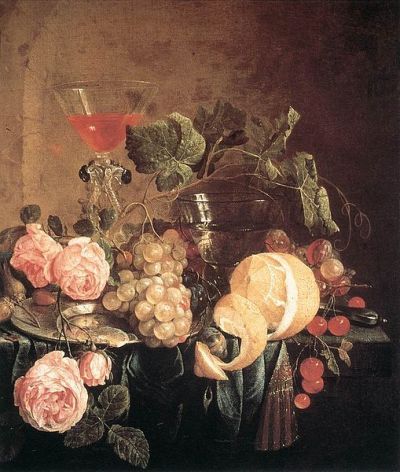
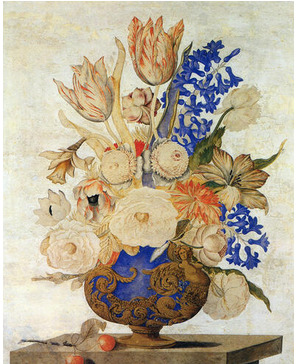
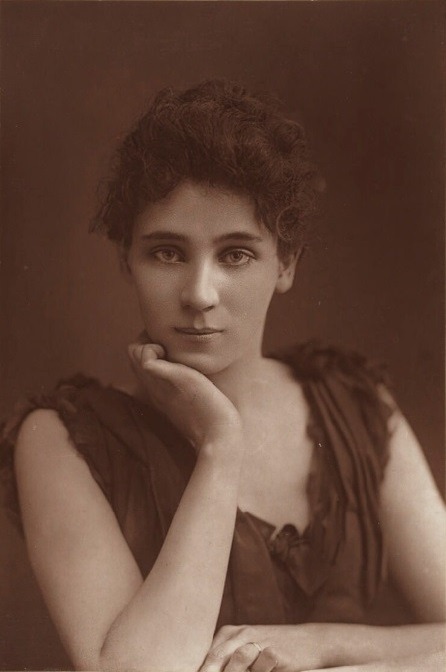
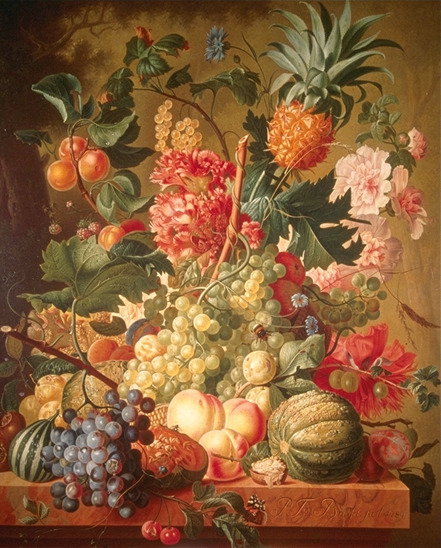

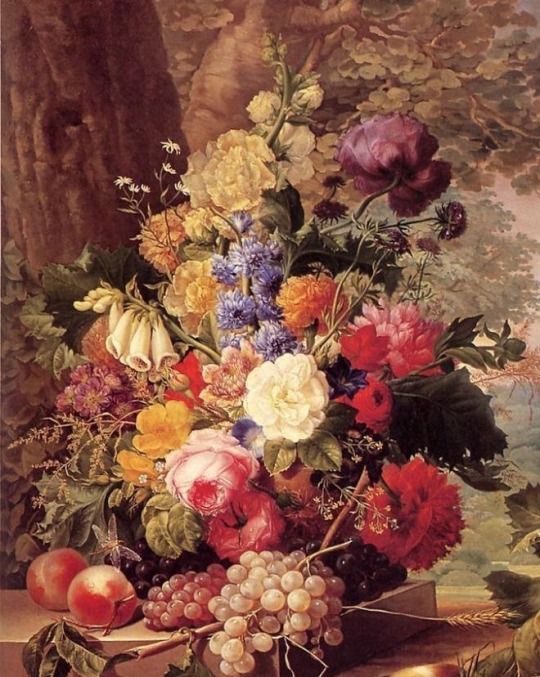

Message in a Haunted Mansion art part IV (part I, part II + part III)
1- February in the Isle of Wight by John Brett, 1866 (on the left/creaking side of the main stairs)
2- Still Life with Flowers and Fruit by Jan van Huysum, c.1700-1750 (dining room, near side)
3- Still-Life with Flowers and Fruit by Jan Davidsz. de Heem, c.1650 (dining room, far side)
4- Gilded and Embossed Vase by Andrea Scacciati, 1674* (parlour, beside the fireplace)
5- Elizabeth Robins by W. & D. Downey, 1893 (nancy's room, on desk)
6- Fruit and Flowers by Paulus Theodorus van Brussel, 1789 (dining room, near side)
7- Flowers in a Vase by Jan Brueghel the Elder, 1588-1625 (cover of the magazine in Louis' briefcase)
8- Large Still Life with Flowers (cropped) by Josef Steiner, c. 20th century (dining room, far side)
9- 18th century Gobelins tapestry design, tapestry after Jean-Baptiste Huet, 1785 (magazine in dining room)
*pictures now image collection, my best friend & my enemy, strikes again; alamy's date is just straight-up wrong, because it's 40 years after Scacciati's death? Mary Evans lists 1674, which is at least possible, but as ever I'm not thrilled to rely on info from image sourcing websites.
31 notes
·
View notes
Text
here is my article talking about the history of cheese c. 1400 – 1700. in it we shall discuss anything prior to 1500 only briefly and make everyone alive during that period out to be a backwards savage. we shall mention a protestant from the year 1569 who despised cheese as overindulgent and not mentioned in the bible once and we shall vaguely talk about how oliver cromwell tried to ban cheese. then we shall talk in excruciating detail about many different types of cheese throughout the twelve months of 1700. hopefully you dimwits and chucklefucks will go away knowing it is pointless to try and research anything prior to 1650 on the internet! have a lovely day
8 notes
·
View notes
Text

‘head of proserpina,’ gian lorenzo bernini, italian c. 1650-1700.
0 notes
Text

Pen box and utensils. White nephrite jade set with rubies, emeralds and diamonds in gold; Mughal court, c. 1650-1700. Photo: V&A
0 notes
Text
Various types of ceramic crucibles: quartz, alumina, boron nitride, zirconia
As an important component of chemical instruments, crucibles are containers for melting and refining metal liquids, as well as solid-liquid heating and reaction. They are the basis for ensuring the smooth progress of chemical reactions. Historically, crucibles were originally made of clay, and one of the earliest uses of platinum was also for preparing crucibles. However, with the development of preparation technology, crucibles can now be made of any material that can melt or change its contents.
There are many types, models, and specifications of crucibles, which can be selected at will, with strong applicability, and can ensure the purity of the smelted material. Among them, ceramic crucibles are an important component of crucibles, and ceramic crucibles can be divided into quartz crucibles, corundum crucibles, boron nitride crucibles, zirconia crucibles, etc. according to the raw materials, and are used in different occasions according to their respective properties.
1. Quartz Ceramic Crucible
Quartz ceramic crucible, full name high-purity fused quartz ceramic crucible (silicon dioxide content ≥ 99.9%), is a ceramic crucible made of high-purity fused quartz as raw material. It has the characteristics of fine structure, low thermal conductivity, small thermal expansion coefficient, good thermal shock stability, good electrical properties, good chemical corrosion resistance, etc. Therefore, quartz ceramic crucible is widely used in the glass deep processing industry, metallurgical industry, electronics industry, chemical industry, aerospace, and other fields. Generally speaking, its shapes are mainly square and cylindrical.
With the attention and development of environmentally friendly energy, solar energy as a green energy has been widely valued by countries around the world. The use of polysilicon for solar energy conversion has increased dramatically, which has promoted the rapid development of polysilicon production. Therefore, the use of large-sized thin-walled square fused quartz ceramic crucibles has also increased dramatically, and the international market prospects are very optimistic about it.
2. Alumina crucible
Corundum crucible, scientific name alumina crucible, people usually call crucibles with an alumina content of more than 95% corundum crucibles. Corundum crucibles are hard and resistant to melting, high-temperature resistance, acid and alkali resistance, rapid cooling, and extreme heat resistance, chemical corrosion resistance, suitable for using anhydrous Na2CO3 and other weak alkaline substances as a flux to melt samples, but not suitable for using Na2O2, NaOH and other strong alkaline substances and acidic substances as a flux to melt samples.

99.70% corundum crucibles have good high-temperature insulation and mechanical strength in an oxidizing and reducing atmosphere of 1650℃-1700℃, and the short-term use temperature can reach up to 1800℃. According to the application conditions, alumina crucibles are available in a variety of sizes and shapes, such as arc crucibles, round bottom crucibles, straight crucibles, square crucibles, etc.
3. Boron nitride crucible
The common types of boron nitride are cubic boron nitride (C-BN) and hexagonal boron nitride (h-BN). Among them, boron nitride crucibles are usually made of h-BN. h-BN ceramics have good heat resistance, thermal stability, thermal conductivity, and high-temperature dielectric strength. They are ideal heat dissipation materials and high-temperature insulation materials.
Due to the excellent chemical stability of h-BN, it can resist the erosion of most molten metals. Because of the above-mentioned high-temperature insulation properties, high thermal conductivity, and low thermal expansion, it is most suitable as a material used in strict environmental conditions such as semiconductor processes. h-BN crucibles are often used for melting metals and semiconductors. Its operating temperature under vacuum is as high as 1800 degrees, and its operating temperature under atmosphere protection can reach up to 2100℃. It is generally protected by nitrogen or argon (atmosphere protection is to prevent the crucible from oxidation).
4. Zirconia crucible
The melting point of zirconia is higher than that of zirconium, reaching 2700℃. It is one of the materials with the best refractory performance in nature. Even if it is heated to 1900℃, it will not react with molten aluminum, iron, nickel, platinum, and other metals, silicates, and acidic slags. Therefore, Zirconia crucibles can successfully melt platinum, palladium, ruthenium, cesium, and other platinum group precious metals and their alloys.
It is worth noting that although zirconia is more expensive than alumina, it is a special oxide refractory material that cannot be replaced by other oxide materials when used in high-temperature furnaces above 2000℃.
0 notes
Text
The Jolly Roger
Since pirate fever has broken out at the moment and many children will be hoisting their black flags on the beach again this summer for fun, the question actually arises as to where the Jolly Roger actually comes from ? the pirate symbol par excellence. The so-called Golden Age of Piracy (c. 1650- 1725) was mainly concentrated in the Caribbean and its treasure routes. The area was not only suitable because of the routes but also because of the numerous hiding places for the pirates and the fact that many nations in these regions often fought each other for dominance. After 1716, the end of the War of the Spanish Succession, the pirates saw a lot of growth as many sailors and also decommissioned privateers did not know where to go and hoped for a free, non-governmental life with a nice extra income, especially attracted by glorifying stories about pirates like Henry Morgan, Calico Jack Rackham, Edward Blackbeard Teach or Bartholomew Black Bart Roberts who led this supposedly glorious life under the black flag.

A genuine skull-and-crossbones pirate ship flag from the 1700s, from the Barbary Coast (x)
The earliest mention of a black flag was in July 1700, when HMS Poole was chasing a pirate ship off the Cape Verde Islands and her captain saw a flag in black with a skull, cross bones and an hourglass. In Charles Johnson's A General History of Pyrates (1724), he also describes the various black and red flags with different designs, such as skulls, whole skeletons, crossbones, hourglasses, bleeding hearts and cutlasses. He is also the one who used the name Jolly Roger, even though he was probably not the original name giver. The name probably comes from the initially red flags, which were called joli rouge (pretty red) in French. But why were there two colours of flags? The black one meant surrender now and we might spare your life. The red meant there was no mercy.

Flag of Calico Jack Rackham (* 1682; † 1720) - Flag of Emanuel Wynnes (late 17th c., early 18th c.)- Flag of Henry Every (* 1653; † 1696)- Flag of Edward Blackbeard Teach (* 1680; † 1718) (x)
It is generally accepted that the red flag came first. This is supported by the fact that until the emergence of piracy in the 16th and 17th centuries, the red flag was considered a quarantine flag and meant "Beware, we may have a disease on board that will kill anyone who approaches us." And deadly on approach was what the pirates wanted. Moreover, in almost every seafaring nation in the 17th century, the quarantine flag was given a swallow's tail, according to the thesis, therefore, to avoid confusion with pirates. In any case, the British navy forbade the flying of exclusively red flags in the Arabian Sea, ships with such flags were treated as pirates; that is why the flags of Bahrain and Qatar still have their jagged shape today. In 1694, the Admiralty had ordered British privateers to fly the red flag. And after the war with Spain, as mentioned above, many of the former privateers switched to the side of the pirates, but kept their red flags.

Flag of Thomas Tews († 1695)- Flag of Stede Bonnets (* 1688; † 1718)- Flag of Edward of England († 1720)- Flag of Bartholomew Black Bart Roberts (* 1682; † 1722) (x)
The black flag is said to have been first flown by Clico Jack Rackham in 1700, but it is also said to have been flown by the Breton pirate Emanuel Wynne, who used the classic motif around 1700. Henry Every also had one with a skull looking to the right, wearing a bandana and an earring, but this was probably a 19th century creation, so his being considered the first Jolly Roger is questionable.

Flag of William Billy One-Hand Condon (* 17th century; † 18th century)- Flag of Christopher Moody (*1694- † 1722)- Flag of Edward Ned Low (* 1690- † possibly 1724 in Martinique by execution)- Flag of John Philips ( † 1724) (x)
There was no fixed design for the flags, they were all different in their own way and directly adapted to the pirate they ascribed to, although the motif of the skull and cross bones appeared more frequently. Which is a classic memento mori symbol to remind us that we are mortal, which is fitting, because ultimately the lives of the victims were now in the hands of the pirates. There is a theory that the black flag completely replaced the red flag, but it is more likely that both were used at the same time and were flown at the whim of the captain.
In the end, everyone knew that whether the flag was red or black, they were in big trouble and most of the Merchantvessels could only hope that a warship was nearby to help them.
574 notes
·
View notes
Text











Felicity Merriman
American Girl: Historical Inspirations
Extra Outfits
Girl with Doll by an unknown artist, 1765
detail from “Bourgeoise with her daughter” from the Galerie des Modes, 1778
c. 1780, Galleria del Costume di Palazzo Pitti
Gown, 1780-1790, Colonial Williamsburg
Frock, 1760-1780, Royal Ontario Museum, scan from Clothes and the Child by Anne Buck
Doll, 18th Century, Museum of Fine Arts Boston
Riding Habit, 1770-1775, Victoria and Albert Museum
Figure, circa 1760, The British Museum
Shift, 1700-1750, Colonial Williamsburg
Bonnet, circa 1812, Met Museum
Pair of Shoes, 1650 or 1669, Victoria and Albert Museum
51 notes
·
View notes
Text
Pietro Bellotti (1625–1700), An old man holding a pilgrim's bottle, c. 1650. oil on canvas. 112.5 × 91.5 cm

Título completo: Un anciano sosteniendo una botella de peregrino Artista: Pietro Bellotti Fechas de los artistas: 1625-1700 Fecha de fabricación: Probablemente 1650 Medio y soporte: óleo sobre lienzo Dimensiones: 112,5 × 91,5 cm Crédito de adquisición: Comprado en 1945 Número de inventario: NG5595 Recopilación: Colección principal Marco: Marco italiano del siglo XVII
Un anciano, con el rostro curtido por la edad y la ropa harapienta y remendada, se apoya en una muleta. Mira hacia abajo, hacia un globo terráqueo o esfera, en el que está pintada la escena de una posada rural al atardecer. En la mano derecha sostiene una cantimplora o frasco de peregrino de barro; este tipo de cantimplora podía sujetarse a la cintura del viajero o peregrino mediante cuerdas (visibles aquí, colgando del lado izquierdo del vientre de la cantimplora). Este tipo de cantimploras se producía en toda Europa y su uso se extendió durante el siglo XVII. Esta pintura se encuentra en Gran Bretaña desde principios del siglo XIX. Durante mucho tiempo se creyó que era española, pero ahora se considera que proviene del norte de Italia. Recientemente se ha atribuido a Pietro Bellotti (1625-1700), pintor de retratos y figuras de personajes, quien también fue superintendente de las colecciones y galerías de arte de la familia Gonzaga en Mantua. Su obra fue popular entre los miembros de la corte española en Italia. Es posible que Bellotti realizara esta pintura para un mecenas español.
Información e imagen de la web de la National Gallery de Londres.
42 notes
·
View notes
Text
Women painters from the seventeenth century and before
I have compiled a small, incomplete list of women painters, working mainly in Europe, who were born before the year 1700. You can find works by all of them by searching for them on my blog or by looking through my early women artists tag. Alternatively, here is a post featuring self-portraits by some of them.
Artemisia wasn’t the only one. We have always been here.
Lucia Anguissola (Italian, 1536 or 1538 - c. 1565, before 1568)
Sofonisba Anguissola (Italian, c. 1532 - 1625)
Mary Beale (English, 1633 - 1699)
Marie Blancour (French, 17th century)
Cornelia toe Boecop (Dutch, 1551 - 1629)
Mechteld toe Boecop (Dutch, c. 1520 - 1598)
Alijda Boelens (Dutch, 1557 - 1630)
Gesina ter Borch (Dutch, 1633 - 1690)
Madeleine Boullogne (French, 1646 - 1710)
Eufrasia Burlamacchi (Italian, 1482 - 1548)
Margherita Caffi (Italian, 1650 - 1710)
Ginevra Cantofoli (Italian, 1608 - 1672)
Joan Carlile (English, ca. 1606 - 1679)
Elizabeth Dormer, Countess of Carnarvon (English, 1633 - 1678)
Rosalba Carriera (Italian, 1675 - 1757)
Elisabeth-Sophie Chéron (French, 1648 - 1711)
Maria Giovanna Clementi (La Clementina, Italian, c. 1692 - 1761)
Suzanne de Court (French, active ca. 1600)
Anna Folkema (Dutch, 1695 - 1768)
Lavinia Fontana (Italian, 1552 - 1614)
Fede Galizia (Italian, 1578 - 1630)
Giovanna Garzoni (Italian, 1600 - 1670)
Artemisia Gentileschi (Italian, 1593 - c. 1656)
Maria de Grebber (Dutch, 1602 - 1680)
Guda (German, 12th century)
Margareta de Heer (Dutch, c. 1600 - before 1665)
Catharina van Hemessen (Flemish, 1528 - ca. 1587)
Johanna Helena Herolt (Johanna Helena Graff) (German, 1668 - 1723)
Sarah Hoadly (English, 1676 - 1743)
Louise Hollandine of the Palatinate (German, 1622 - 1709)
Antonina Houbraken (Dutch, 1686 - 1736)
Anna Maria Janssens (Belgian, before 1620 - after 1668)
Henrietta Johnston (American, c. 1674 - 1729)
Gisela von Kerzenbroeck (German, 13th century)
Ann Killigrew (English, 1660 - 1685)
Katherina Van Knibbergen (Dutch, 17th century)
Anna Maria de Koker (Dutch, 1640 - 1698)
Giulia Lama (Italian, c. 1685 - after 1753)
Herrad of Landsberg (Alsatian, c. 1130 - 1195)
Judith Leyster (Dutch, 1609 - 1660)
Barbara Longhi (Italian, 1552 - 1638)
Elisabetta Marchioni (Italian, active 17th century)
Diana De Rosa, called Annella di Massimo (Italian, 1601 - 1634)
Maria Sibylla Merian (German, 1647 - 1717)
Princess Mitsuko (Gen’yo) (Japanese, 1634 - 1727)
Louise Moillon (French, 1610 - 1696)
Maria Monninckx (Dutch, 1673 or 1676 - 1757)
Jacoba Maria Nickele (Dutch, c. 1690 - 1749)
Plautilla Nelli (Italian, 1524 - 1588)
Josefa de Óbidos (Portuguese, 1630 - 1684)
Maria van Oosterwijck (Dutch, 1630 - 1693)
Arcangela Paladini (Italian, 1596 - 1622)
Geronima Cagnaccia Parasole (Italian, c. 1569 - 1622)
Magdalena van de Passe (Dutch, c. 1600 - 1638)
Catharina Peeters (Dutch, 1615 - 1676)
Clara Peeters (Flemish, 1584 - 1657)
Angela Maria Pittetti (Italian, 1690 - 1763)
Elena Recco (Italian, active 17th - 18th century)
Cornelia de Rijck (or de Ryck, Dutch, 1653 - 1726)
Marietta Robusti (Italian, c. 1550 - c. 1590)
Geertruydt Roghman (Dutch, 1625 - 1657)
Anna Elisabeth Ruysch (Dutch, 1666 - after 1741)
Rachel Ruysch (Dutch, 1664 - 1750)
Maria Schalcken (Dutch, 1645 - 1699)
Anna Maria van Schurman (Dutch, 1607 - 1678)
Elisabetta Sirani (Italian, 1638 - 1665)
Levina Teerlinc (Flemish, c. 1510-1520 - 1576)
Maria Verelst (English, 1680 - 1744)
Johanna Vergouwen (Flemish, 1630 - 1714)
Charlotte Vignon (French, before 1639 - after 1685)
Anna Waser (Swiss, 1678 - 1714)
Michaelina Wautier (or Woutier, Woutiers, Belgian, d. 1689)
Alida Withoos (Dutch, 1670 - 1715)
Aleida Wolfsen (Dutch, 1648 - after 1692)
Margaretha Wulfraet (Dutch, 1678 - 1760)
Kiyohara Yukinobu (Japanese, 1643 - 1682)
1K notes
·
View notes
Text
Understanding the Benefits of 321H Stainless Steel Round Bar
If you are looking for a reliable, durable, and corrosion-resistant stainless steel round bar, then the 321H stainless steel round bar is a perfect choice. This type of alloy is composed of 18% chromium, 8% nickel, and 0.08% carbon and is ideal for engineering projects that require high strength at elevated temperatures. Let's look at the benefits of 321H stainless steel round bars.

High Corrosion Resistance
One of the main advantages of using 321H Stainless Steel Round Bars is its superior corrosion resistance compared to other metal alloys. The chromium content in this alloy helps it resist oxidation and other forms of corrosion at elevated temperatures up to 900°C (1650°F). This mixture makes it an ideal material for use in industries operating under high-temperature conditions, such as petrochemical or power generation plants.
Strength and Durability
This alloy's combination of chromium and nickel makes it incredibly strong yet still malleable enough to be used in various engineering applications. It also has excellent creep strength, which means it can withstand extended periods under extreme pressure without becoming deformed or damaged. This property suits it for applications where parts must withstand prolonged exposure to high temperatures, such as engine components, valves, and turbine blades.
Heat Resistance
The heat resistance properties of 321H stainless steel round bars make them ideal for applications that require exposure to extreme heat or corrosive elements, such as jet engines or chemical processing tanks. The 8% nickel content protects against oxidation and other forms of corrosion under these conditions, making this alloy resistant up to 925°C (1700°F).
Conclusion
321H stainless steel round bar offers many advantages over traditional metal alloys, especially when working with extreme heat or corrosive elements. Its superior corrosion, strength, durability, and heat resistance make it an ideal choice for demanding engineering projects requiring high-performance materials capable of withstanding extreme environments. Whether you need parts for a petrochemical plant or a turbine blade component, 321H stainless steel will ensure your project operates safely and efficiently in any environment.
2 notes
·
View notes
Photo

Imari Ware (?) Container with Brass Mounts, c 1650- 1700, Cleveland Museum of Art: Japanese Art
Size: Overall: 8.9 cm (3 1/2 in.); Diameter of base: 4.8 cm (1 7/8 in.) Medium: imari ware (?) porcelain; brass mounts
https://clevelandart.org/art/1919.33
32 notes
·
View notes
Text







The people of "Old Rus" (corresponding more or less to the area now covered by Ukraine, Belarus and western Russia) began to convert to Christianity in the 10th century under the influence of the Byzantine Empire and the Church of Constantinpole, which had split from the Roman Catholic Church in the wake of the Great Schism of 1054. Along with Orthodox liturgy and ritual, icons also became popular in the region and themes and models of Byzantine inspiration took root.
Works shown above:
Central Russia, The Mother of God, Joy of All Who Sorrow, c. 1725-50, tempera on wood
Central Russia, The Resurrection of Christ and His Descent into Hell, with sixteen scenes from the story of Christ after his death, c. 1650-1700, tempera on wood
Moscow, All of Creation Rejoices in Thee, O Full of Grace, c. 1575-1600, tempera on wood; silver gilt, filigree, enamel
Central Russia, The Mother of God, Joy of All Who Sorrow, c. 1700-30, tempera on wood
Central Russia, The Synaxis of the Archangels, c. 1730-40, tempera on wood
Central Russia, St. Michael the Archangel, Prince of the Heavenly Hosts, c. 1725-50, tempera on wood
Kostroma O Jaroslavl, The Annunciation, c. 1725-50, tempera on wood
📍Palazzo Pitti, Florence
#stew’s travels#my photos#photography#russian art#art history#renaissance art#christian art#christianity#orthodox#italy#firenze#christianity in russia#biblical art#russia#pitti palace
2 notes
·
View notes